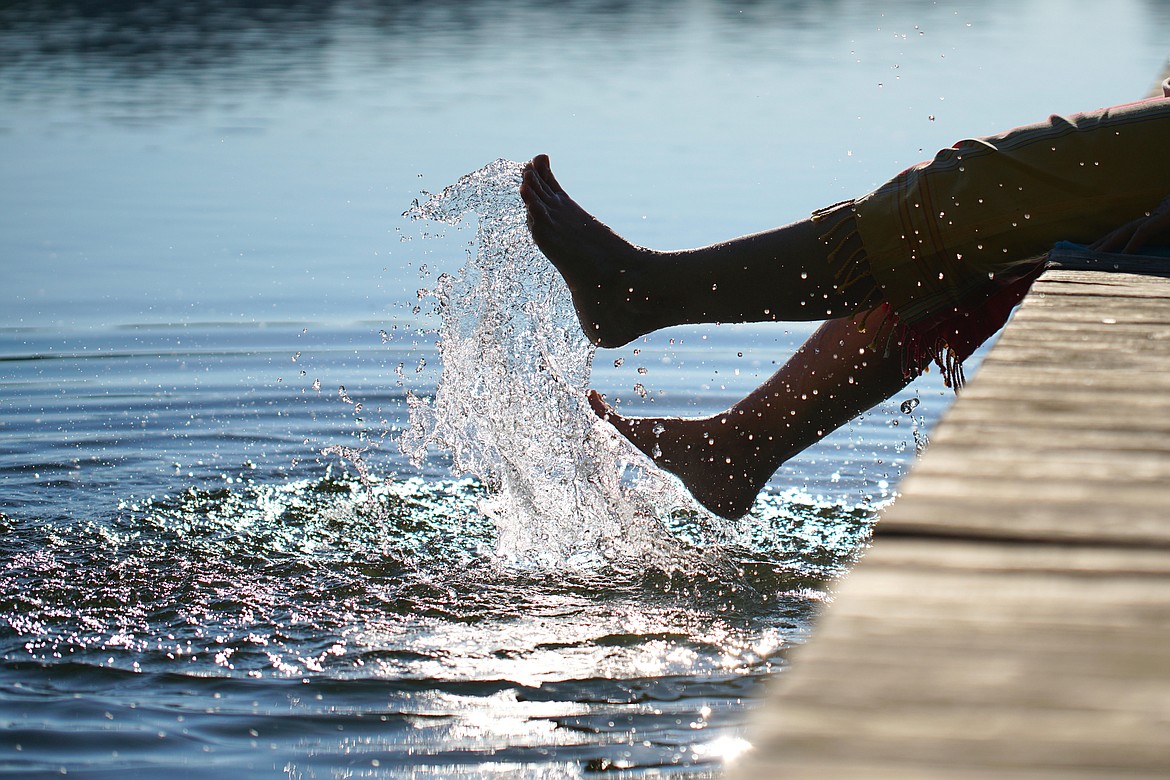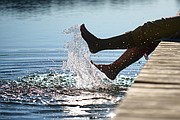Deep Dive into FLBS: Flathead’s Future is a Terrible Thing to Waste
We’ve been meeting here in the pages of the Bigfork Eagle for a while now, and it’s because of our connection diving head first into the science and stories of our watershed that I feel safe enough to confess something that I’ve never told anyone before: When I was growing up, a magic and invisible gremlin named Wasserbone Phishus lived under my family’s kitchen sink.
Now I know what you’re thinking, so let’s see if I can head off some of your more obvious questions:
Q. I’m sorry, what did you say?
A. It’s pronounced Wasser-bone Phish-us. And hang with me—I promise this is going somewhere.
Q. Have you suffered a head injury recently?
A. Yes, but that’s having little to no impact on this column (at least, I don’t think).
Q. What makes you believe there was a magical creature in your childhood kitchen?
A. That’s an easy one. When I was a kid, every time I finished enjoying a bowl of cereal, a mug of hot chocolate, multiple platefuls of cheese pizza (with plenty of ranch on the side), I would drop my dirty dishes in the sink. And every time, as I departed the kitchen, my mother would say something like, “I think it’s time to start, Wasserbone Phishus!” Soon after, once I was back in my bedroom or in our family room watching TV, I would hear the running of water, the opening and closing of cabinets, the clattering of cookware shifting about in the kitchen sink.
I was never brave enough to linger in the kitchen long enough to catch a peek of Wasserbone in action. Still, he must’ve been real, because the next morning all the plates and utensils that I had used the previous day would be washed, cleaned, and stowed away in the proper places.
It was a splendid arrangement, but one that was not meant to last. Sometime during my early teens, my dirty dishes started piling up in the sink and I was forced to confront (and ultimately clean up after) the indulgences I had for so long been able to enjoy without responsibility or regard. Another magical age of my childhood was over. The amazing Wasserbone Phishus was no more.
Still, it was great while it lasted. And even though you may not appreciate what it’s like having a mythological creature lurking around wanting nothing more than to wash your dirty dishes, we all employ a little magical thinking when it comes to confronting our messes. Take the bathroom: You walk in. You do your business. You push a button. And poof, the mess is gone. Except that it isn’t.
Earlier this month, in coordination with the University of Montana, National Science Foundation, Flathead Basin Commission, and Whitefish Lake Institute, Bio Station researchers hosted a collaborative workshop focused on addressing septic system issues in the Flathead Watershed. Featuring prominent scientists from across the country, and with local and state legislators, stakeholders, and managers in attendance, the aim of the workshop was to highlight growing concerns about septic system impacts on water quality and freshwater ecosystems here in Montana.
Q. The entire workshop was focused on…septic systems?
A. Yes, and for good reason. Over half of the homes in Montana and in the Flathead Watershed depend on septic systems for wastewater treatment. When properly installed, maintained, and inspected, septic systems greatly reduce freshwater pollution associated with septic leachate— the wastewater that is discharged from a septic system after the solid material has been separated.
Unfortunately, even a well-managed septic system only has a functional lifespan of around 30 years, and many systems—often due to homeowner turnover—don’t always get the maintenance, inspection, and care they need to function properly. In some areas around Flathead Lake, the average age of the septic systems is over 50 years.
Q. Why does this matter?
A. Unlike wastewater that’s been treated by municipal or community wastewater treatment facilities, septic leachate contains powerful the fertilizing nutrients nitrogen and phosphorus. When septic systems are functioning poorly, a higher percentage of these nutrients make their way through groundwater and surface waters into Flathead Lake.
This is known as nutrient loading, and can be the cause of harmful ecological developments like toxic algal blooms—fast-growing communities of algae that consume dissolved oxygen, kill off fish and other aquatic wildlife, reduce recreational value of our waters, and even have the potential to become a health threat to humans and pets.
Additionally, septic leachate from improperly functioning septic systems are often contaminated with disease-causing pathogens. Following the same route as excess nutrients, these pathogens can make their way into drinking water, aquifers, and public swimming and popular recreational areas of Flathead Lake (and other beloved water bodies).
A study conducted in the Florida Keys found that it only took three hours for biological markers (which represent human pathogens like viruses) to make their way from toilets to coastal swimming areas. A study conducted in Michigan found a direct link between the density of septic systems in an area and diarrhea in children.
Studies in the Flathead Watershed conducted by the Bio Station and partners over the decades have definitively shown that septic leachate reaches the waters that we love, including Flathead Lake, Whitefish Lake, Echo Lake, and even Lake McDonald in Glacier National Park.
Q. What can we do?
A. Being proactive with our septic systems is the first and most important step. A healthy septic system should be inspected and pumped every 3 to 5 years. Effluent filters should be cleaned every 6 to 8 months. Organizations like the Flathead and Lake County Conservation Districts are providing grants and financial assistance to help cover some of the costs associated with septic system upkeep.
Still, even properly maintained septic systems may start breaking down after 30 years, and the cost to replace a septic system is considerable. But there is no magic creature living under our homes patiently waiting to clean the messes we leave behind.
Come to think of it…it actually occurs to me now that maybe there never was an invisible gremlin named Wasserbone Phishus residing under the kitchen sink of my childhood, and that all along my mother was actually saying, “I think it’s time to start washing your own dishes!” before washing, cleaning, and stowing them herself.
Oof—that’s a humbling realization, and in such a public setting. Taking ownership of one’s own mess is among the least appetizing aspects of becoming an adult. But it also seems to be one the few things in our control that can help better the world. By being responsible for the things we leave behind (literally and figuratively), we have a better chance of sustaining this remarkable place for generations to come. After all, the last thing we want to flush around here is the future of our waters in this Last, Best Place.



